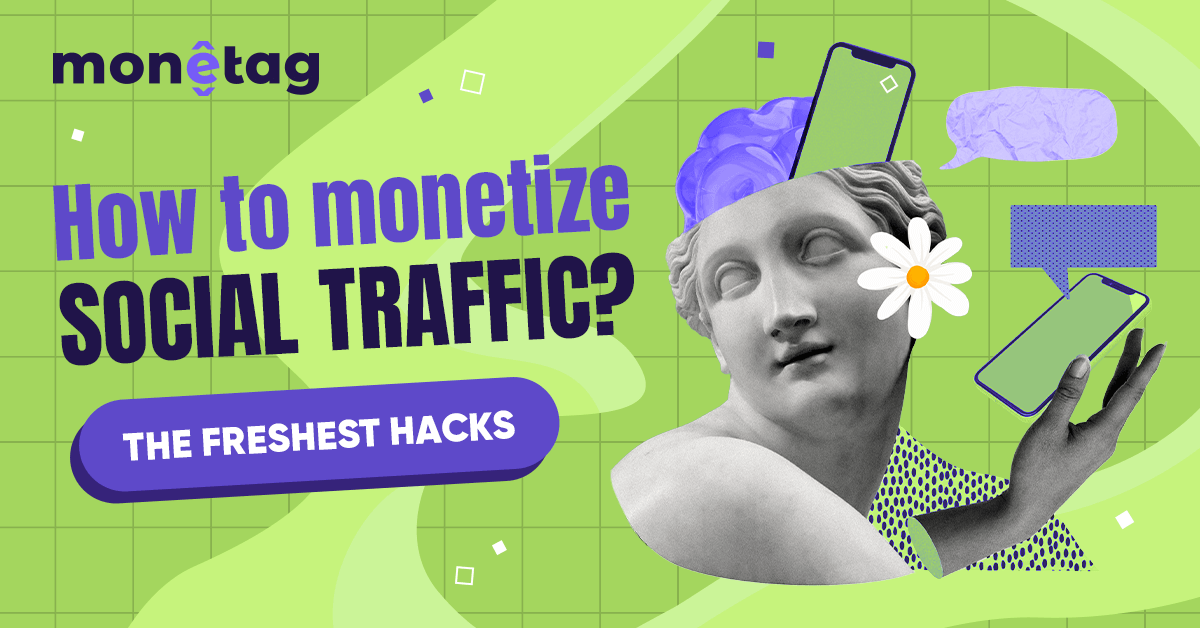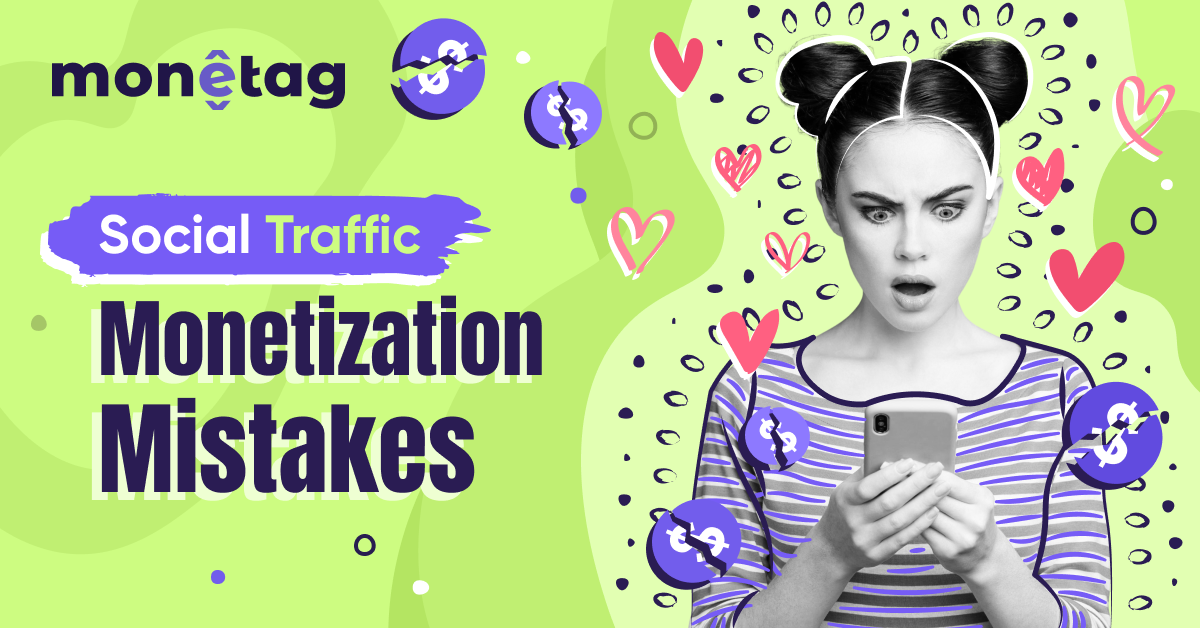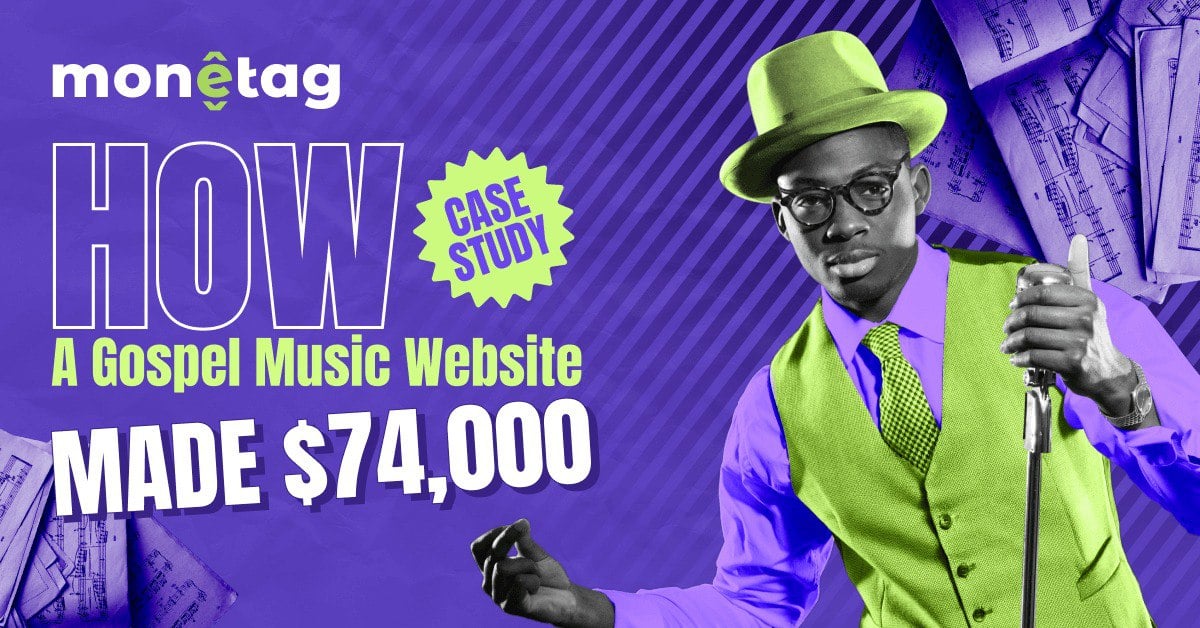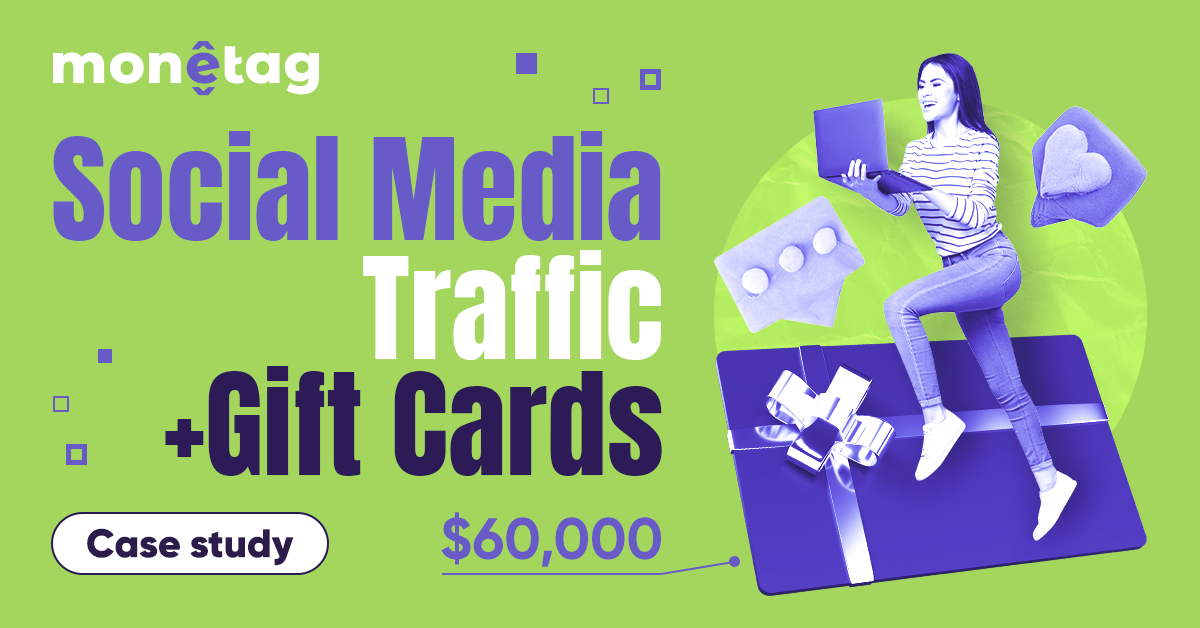From Viral Videos to a Website Chain and $3500+ a Month: How a Movie Fan Turned Social Traffic into Profit [Case Study]

The case study we brought you today stands out for three reasons.
First, this publisher had a small advantage: he’s a web designer. But don’t let that fool you: his results come from smart moves, not secret skills, so you can replicate his logic, too.
Second, this is a showcase of several powerful social-to-site funnels. And third, he didn’t stop at a single website: he built a small ecosystem of sites and partners.
But let’s start from the beginning.
About the Publisher: Quick Intro
Our publisher is keen on movies and series, and monetizes his hobby with a following combo:
- Social networks – Facebook, Telegram, TikTok, Instagram
- His own site, where he drives traffic from social media
- Monetag ads – specifically, Popunder (OnClick) and Push.
So his funnel, in short, is like this: an engaging social media post – a site with more content – an ad.
Now to the details.
The Publisher’s Story: How it Began
Just like many content makers, our publisher started his TikTok account as a hobby. He was creating and posting movie and TV series edits, and later, he switched to short teaser-style clips.
As a web designer, he knew how to make videos both visually appealing and engaging, and that’s why they often went viral. In 2023, he decided to monetize his efforts and start working seriously as a publisher.
So did he just add some affiliate links to his TikTok account? No, he chose a much more strategic way – and here is how the websites era began.
Building a Website Chain
Being a web designer doesn’t mean you can build a whole movie fan website effortlessly. The publisher admitted he had no coding experience, so the first site version took him about two to three months of constant learning.
Still, his design background really helped.
The main reason my project became successful was that I didn’t just copy popular sites like most people do. I created something similar but with a fresh, elegant, and user-friendly design that people loved.
In total, he spent around $300 to build his first site and promoted it through TikTok and Telegram. Within two months, he earned approximately $600, doubling his initial investment. That’s when he realized this could grow into something bigger.
Initially, the publisher managed everything himself: design, setup, and content. And, two months later, he expanded his project. He created a similar website for a TikTok creator with strong engagement but no clear monetization goal and offered them 40–50% of the revenue for promotion. It worked out.
Then he repeated the same model with his cousin and another skilled person on Facebook. Each one promoted a different site, and together they formed a small ecosystem. His first website remained fully his, while the others brought pure profit.
For beginners, I strongly recommend starting with just one website during the first two months because the first month is always the hardest. After the initial period, once you get used to the process, you can start developing your project and later open more websites. Opening multiple sites at the very beginning can feel overwhelming.
Attracting Traffic From Social Networks
Our publisher works with Facebook, TikTok, Telegram, and Instagram. Here is what he does:
- Facebook. Posts short videos, and also publishes Stories: they bring great traffic, as you can put the link directly in the post, so people can click instantly without any extra steps. This is the shortest and most effective funnel.
I didn’t believe Facebook would bring big results, but one day I decided to try and it completely surprised me. Before Facebook, my daily revenue was around $25. After I started posting there and hit a viral trend, I made $90 in a single day. That’s when I learned that you should never depend on only one platform. Now, it’s my #1 traffic source, followed by TikTok and then Instagram.
- TikTok. Posts short videos with thrilling or intriguing scenes, often focused on a specific moment or event. It makes people curious to learn more about the movie. The video contains a hook like ‘Learn more in the first comment’, and the first comment actually contains a link to a site.
- Telegram. Manages a channel with articles that contain links to his site. Users find the Telegram link in his TikTok bio, so the funnel is pretty complicated. Still, it brings the most engaged and warmed-up audience: people who have already watched his videos, explored some Telegram content, and are now fully ready to visit the site.
7 Golden Rules On Social Media Traffic
Here are the rules our publisher follows to make the whole system work smoothly:
- Choose your website domain name wisely. It should be short, catchy, and easy to remember, so people can find it again easily.
- Be consistent: your content must be regular. As our publisher says, if one of his videos goes viral (1–3 million views), he might earn $200 in a single day. But if he doesn’t post or the video doesn’t trend the next day, the earnings drop naturally.
- Post at the most active hours. For TikTok and Facebook, they are 5 PM, 7 PM, 9 PM, 11 PM. Note: that’s what works for our publisher; your audience might have a different schedule.
- Don’t post too many videos at once; it’s better to spread them out during the day.
- Test new content styles but rely on the content that works best for you at the moment. For example, it’s the teaser Reels moments for our publisher.
- Repost and reuse wisely. Old clips rarely perform well: audiences have already seen them, so the engagement drops fast. However, if a video went really viral once, you can try to repost it again after a couple of weeks, and chances are it’ll perform even better the second time.
- Don’t just chase the biggest numbers. Calculate monthly and yearly results instead: even $25/day is $750/month and $9,000/year. Every platform adds up, so keep posting everywhere you can. Even if you earn $20–$30/day, that’s already a strong result if you stay consistent. Once you learn and stabilize your first site, expanding becomes natural.
And the last one naturally brings us to the most important part: how to monetize all this.
Traffic Monetization with Monetag
Our publisher uses Popunder and Push ads on his website. However, as he shared, Popunder was the most effective format for him, and the stats confirm it:

Here is also his GEO breakdown and daily earnings:


As you see, there are traffic spikes – and, as the publisher says, they are usually related to social media trends. If a video goes viral, the impressions and profits immediately rise. So, he earns from $50 to $200 a day, and from $2000 to $4000 per month, depending on how well his videos perform. For example, in August 2025, the publisher earned $3,541.75, and in September — $3,880.08.
And here is why he picked Monetag for his earnings:
When I was first researching ad networks, I tried another company, but I couldn’t understand their system and didn’t earn anything. Then I saw that many people recommended Monetag, tried it, and even on the first day, I made $2, while the other network gave me nothing for two days. I’ve been with Monetag for two years now, and I’ve received many offers from other companies, but I never switched.
As our publisher claims, the best things about Monetag are:
1. High and stable earnings
2. Easy setup and reliable performance
3. Great support. (‘especially my manager Maria, who always helps me with everything (new zones, custom ad limits, payouts, etc.’).
A Quick Summary
You don’t even need a site to start earning like this. Monetag ads are perfect for anyone who knows how to work with social media and drive traffic. So, if you only repeat the first step from our publisher’s story – creating your own social pages and building an audience – that’s already enough to start earning.
So, join Monetag, and maybe you’ll be the hero of our next successful case study.







